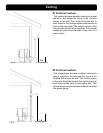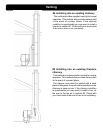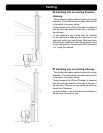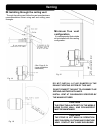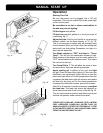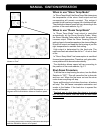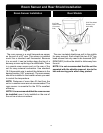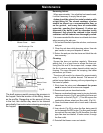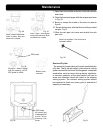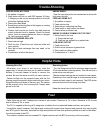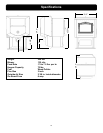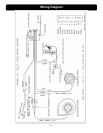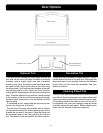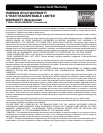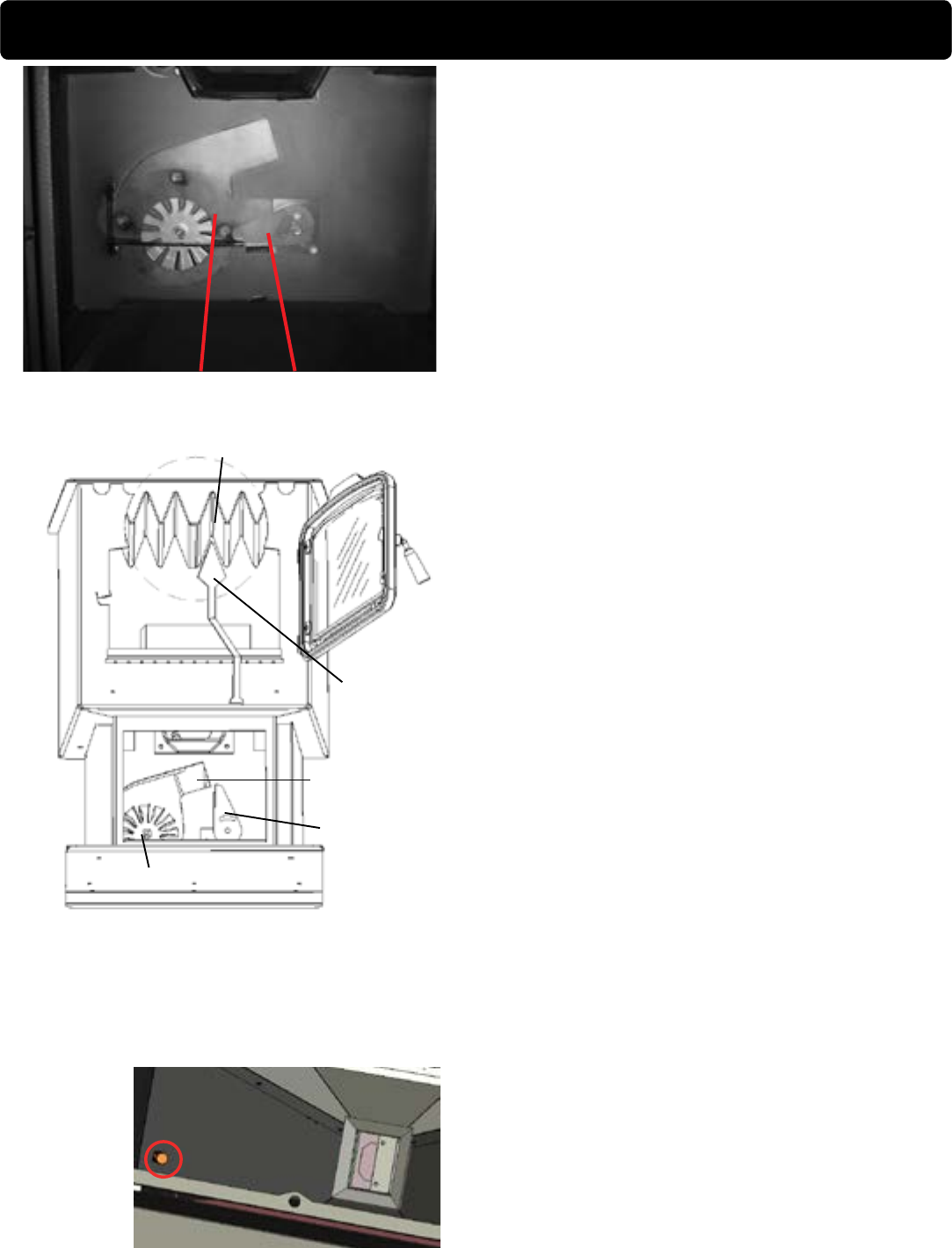
16
Removing Ashes:
When approximately 1 ton of pellets has been burned,
it will be necessary to empty the ash pan.
Ashes should be placed in a metal container with
a tight tting lid. The closed container of ashes
should be placed on a noncombustible oor or
on the ground, well away from all combustible
materials, pending final disposal. If ashes are
disposed of by burial in soil or otherwise locally
dispersed, they should be retained in the closed
container until all cinders have thoroughly cooled.
It is recommended that the stove is cold and shut down
when removing the ash pan.
1. Pull on latch handle to open the ash door, and remove
ash pan.
2. Close the ash door while dumping ashes. Use ash
pan handle to carry and dispose of ashes.
3. Return the ash pan into the stove and latch the ash
door securely.
Cleaning:
Scrape the burn pot surface regularly. Whenever
adding fuel, it is a good time to scrape the burn pot.
Using the at end of the scraper tool, scrape under
the re to remove any carbon deposits which may be
forming. The more frequent the scraping, the better
performanc you'll have.
The stove will need to be cleaned for approximately
every 2 to 5 tons of pellets burned. The amount of
pellets burned before cleaning will vary depending on
the brand of pellets.
1. Shut down the stove and disconnect the power
cord to insure that all motors are stopped.
2. Remove ash pan as described earlier.
3. Remove combustion blower cover by turning the latch
vertical as shown in Fig.26 and sliding the cover out
of the slot on the left (Fig.27.) This will expose the
combustion blower wheel and ue outlet, (Fig.24.)
4. Clean the blower wheel with a brush and a vacuum
cleaner.
5. Use a brush (Fig.30) to clean the ue, being careful
not to damage the ESP probe. The ue goes straight
through into the vent pipe (Fig.29) therefore, the vent
pipe can also be cleaned, to some extent, through
the ue outlet.
6. Reinstall the blower cover and relatch.
Scraper
Blower Cover
Latch
Blower Wheel
Flue Outlet
Heat Exchanger Fins
Fig. 25
Combustion
Blower Cover
Fig. 24 Blower Cover
Latch
Maintenance
The draft pressure switch senses the pressure in
the hopper. Note the location of this tting, known
as the mufer. Depending on the amount of nes
in the fuel, this mufer may need to be cleaned
periodically. Use caution when cleaning or emptying
the hopper.



